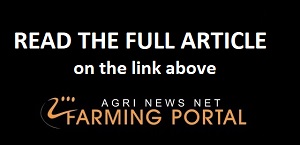In 2020/21, the total SA commercial white and yellow maize areas increased (compared to the 2019/20 season) with the total maize area increasing by an estimated 145 000 hectares.
Interestingly, while the total commercial white maize area increased by about 4.7%, the GM white maize area increased by 12.2%, while the GM yellow maize area was stable, decreasing by less than 1%. Where the last number of seasons’ increased, conventional maize plantings were attributed to non-GM maize price premium expectations, and the endeavour to reduce input costs and financial risk in an environment associated with lower grain prices and volatile weather conditions, the 2020 planting season expectations at planting time were that of relatively good prices and largely favourable weather conditions. 2018/19 and 2019/20 saw a slight decrease in the commercial GM maize area, but the area increased in 2020/21 to reach 83% which compares well with the 84% of 2017/18. Though lower than in 2019/20, the conventional yellow maize area was still substantial at 28%, while the white conventional maize area was estimated at 9% of commercial plantings. • The insect resistant (IR) Bt single trait area and percentage share decreased slightly. • Single trait herbicide tolerant (HT) maize plantings increased by 136 000 hectares, driven by increased HT white maize plantings, and the total HT area contribution increased from 15 to 19 percent for the 2020/21 production season. • The stacked IRxHT maize area increased by 35 000 hectares, but its share in total area decreased from 61% to 59%.

Agriculture Employment
Statistics South Africa (StatsSA) released the fourth and final quarter of 2022’s Quarterly Labour Force Survey on the 28th of February 2023. This brief seeks to contextualise the agricultural labour market performance using this and other relevant data sources. In the last quarter, we focused our analysis on whether the agricultural sector has shed jobs in the past two years, for which we presented some alternative data to suggest that this was not the case. Since the data remains problematic, as we’ll highlight again in this brief, we assess the QLFS trends, but also discuss some of the main factors affecting agricultural employment. The unemployment rate has improved somewhat in the final quarter, and for the full calendar year, of 2022. In the past year, the narrow unemployment rate declined from 34.3% to 33.5%, and the broad definition from 43.2% to 42.3%. Such numbers suggest that there are improvements in SA’s labour market leading to more jobs being filled and fewer jobs being lost. However, as we’ve cautioned for several months, there is reason to believe that thisislargely due to the weaker survey response rate. While this has been improving, it is currently still 4% lower than prior to the COVID-19 pandemic.















